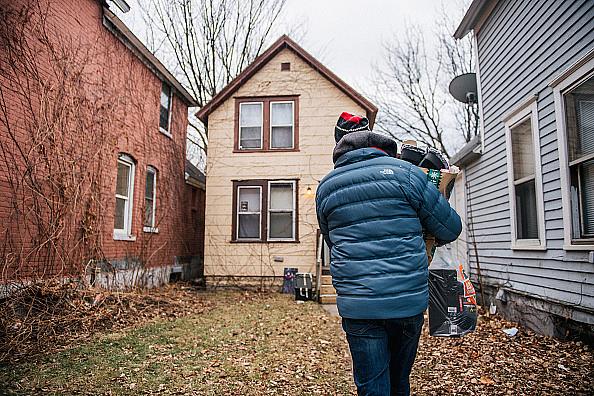Is Medicaid estate recovery deepening inequities in Minnesota?

(Photo by Brandon Bell/Getty Images)
It began in 1993.
The federal government passed the “Deficit Reduction Act,” seeking in part to fight the national debt with new fees and program requirements. One of those requirements was that states use Medicaid estate recovery, a program which can take the home of dead Medicaid recipients who left unpaid bills for their long-term care. Since the act passed, complaints against the program have grown. And inequities caused by it may have deepened.
A report by the Medicaid and CHIP Payment and Access Commission, a nonpartisan agency that makes recommendations to Congress, said many states’ Medicaid estate recovery programs recouped less than 1% of the money that people owed for long-term care. While they found that returns from the program have been minimal, they said strain from the program may be unevenly placed on people of color, who make up more than half of Medicaid recipients.
Further reporting from The Atlantic has detailed how detrimental losing a home can be for such families. Some will lose houses they had maintained for years, lining the pockets of state agencies instead of passing that wealth to the next generation. People who cannot afford a lawyer to fight the claim can sign a hardship waiver to try and prevent the state from seizing their home. However, states can define for themselves what qualifies as a “hardship.” As a result, different states have claimed different shares of homes from families of color. And as more Americans turn towards Medicaid, more people may fall into the program or abandon plans to own a home.
“We’re in danger of disincentivizing some of these ambitions that we have of saving for retirement or purchasing a home,” said John Kantke, a University of St. Thomas professor and attorney at Estate and Elder Law Services in Minneapolis. “If I know ahead of time that if I go into a care facility I’m going to lose every cent of that down to my last $3,000, then owning a home isn’t as significant. It’s much more temporary, and it’s not something that I can think of as benefitting my children.”
My goal for the 2021 Data Fellowship is to investigate how the program is implemented in Minnesota, analyzing estate recovery and hardship waiver data from attorneys, the state, and the federal government. We’ve identified where such data exists at the state and county level, and would tie that to real-life examples of people affected by this program. Supported by their stories, data, and critiques of the program that we’ve identified among experts, advocates and legislators at the local, state and national levels, I hope to inform people how this program may disproportionately impact Minnesotans of color. By shining a light on this issue, we hope to affect change for states across the nation that must also pursue the homes of vulnerable families.

